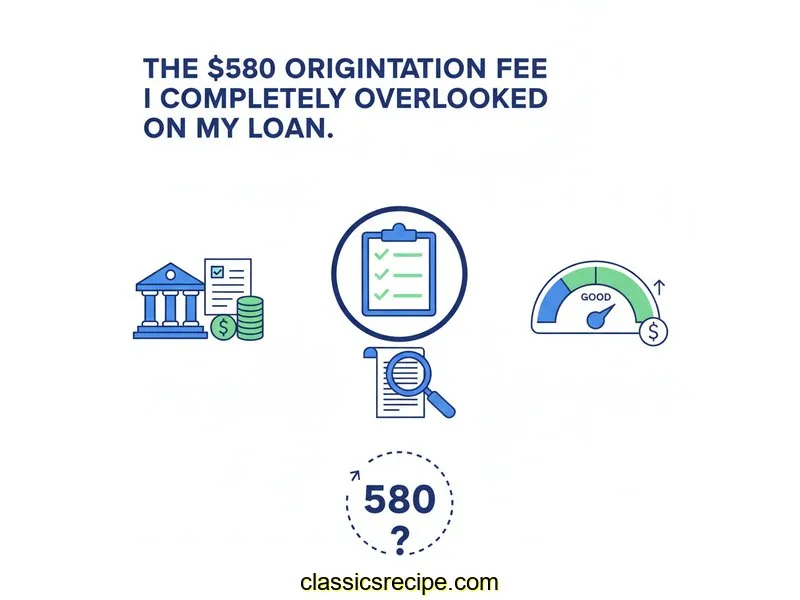
Auto Loan Calculator
Calculate payments over the life of your Loan
Home Blog Privacy Terms About Contact
Calculate payments over the life of your Loan
Home Blog Privacy Terms About ContactPublished on October 12, 2025

It started with a feeling of dread every time I opened my banking app. There were three credit card balances staring back at me, each with its own due date, its own jaw-dropping interest rate, and a balance that felt stubbornly stuck. One was for an old furniture purchase, another from a series of car repairs, and the third was just... life. Together, they totaled just over $14,000, and I felt like I was running on a financial treadmill, making payments but getting nowhere fast.
The stress was constant. Was the payment for the blue card due on the 15th or the 18th? Did I remember to pay the store card? The mental energy it took to juggle everything was exhausting. I dreamed of simplicity: one single monthly payment, one interest rate, and a clear finish line. A personal loan for debt consolidation seemed like the perfect, elegant solution. How hard could it be?
In my mind, the process was straightforward. I’d find a reputable online lender, apply with my decent credit score, get approved for a $14,500 loan, and wipe those credit cards clean. I was so focused on the end goal—that feeling of relief—that I approached the application process with a dangerous level of confidence. I shopped around a little, but my eyes were glued to two numbers: the interest rate and the monthly payment. When I found a lender offering what looked like a great rate of 11.99% and a manageable monthly payment, I felt like I’d hit the jackpot.
This is my personal experience, and I'm sharing it because the simple process I imagined had a costly flaw I didn't see coming. I'm not a financial advisor, and this is just my story of a mistake I made and what I learned from it. My journey started with optimism but quickly turned into a lesson I’ll never forget.

The email I’d been waiting for arrived two days after I digitally signed the loan documents. "Congratulations! Your loan has been approved and funded." A huge wave of relief washed over me. I imagined myself logging into each credit card account, clicking "Pay in Full," and finally freeing myself from that high-interest debt. I had done it. Or so I thought.
With a sense of triumph, I logged into my checking account to confirm the funds had arrived. My eyes scanned the screen for the deposit: $14,500. But that’s not what I saw. The number staring back at me was $13,920. My heart sank into my stomach. I refreshed the page, thinking it had to be a mistake. It wasn't. There was a $580 shortfall.
Panic set in. Where did the money go? Was this a mistake? Did I miscalculate something? My mind raced through a dozen frantic possibilities before I forced myself to calm down and investigate. I pulled up the loan agreement I had so eagerly signed just a few days prior. This time, I didn't just skim it. I read every single line, my anxiety growing with each paragraph.
And then I found it, buried in a dense section titled "Loan Costs and Fees." It was a single, devastating line item: "Origination Fee: 4.00% of the total loan amount, deducted from loan proceeds prior to disbursement." My blood ran cold. I did the math on my phone's calculator, my fingers trembling slightly. Four percent of $14,500 was exactly $580. The money wasn't missing; it had been taken out before I ever saw it. I had been so mesmerized by the low interest rate and monthly payment that I had completely and utterly ignored one of the most critical parts of the loan's cost. The feeling of relief I'd had just minutes before was replaced with a hollow sense of frustration and embarrassment. The loan that was supposed to solve my financial stress had just created a brand new $580 problem.
That moment of discovery was a painful but necessary wake-up call. I spent the next two weeks not just figuring out how to cover the shortfall, but diving deep into the world of loan terms. I was determined to never let something like this happen to me again. My initial research started with a simple search: "What is a loan origination fee?" I learned that it's a common charge by some lenders to cover the costs of processing a loan application. It's not necessarily bad, but it has to be factored into the total cost.
This led me down a rabbit hole of understanding the crucial difference between a simple interest rate and the Annual Percentage Rate (APR). The APR, I discovered, is the true cost of borrowing because it includes fees like the origination fee I had paid. My loan's advertised 11.99% interest rate was technically correct, but the APR was much higher because of that hidden fee. That was the number I should have been comparing all along.
Armed with this new knowledge, I created a mental checklist for how I would approach this differently in the future. It's a process born from my own mistake.
My first step would be to ignore the flashy advertised interest rate at the top of the page. Instead, I learned to immediately look for the APR. In my experience, the APR is the most important number for comparing the true cost of different loan offers because it standardizes the inclusion of fees.
Before signing anything, I would now locate the standardized disclosure summary (often called a "Truth in Lending Act" or TILA disclosure). This box clearly lays out the APR, finance charge, amount financed, and total payments. This is where my origination fee was listed, and I now know to treat this section as the most important part of the document.
Instead of just looking at the monthly payment, I now calculate the full cost. I do this by multiplying the monthly payment by the number of months in the loan term. A $383 payment for 48 months equals $18,384. When I realized I was paying back over $18,000 for a loan that only gave me $13,920 in usable cash, the impact of the fee became painfully clear.
Finally, I learned that a slightly higher interest rate on a loan with no origination fee can sometimes be cheaper overall than a loan with a lower rate and a hefty fee. I now use online loan calculators that have a field for "origination fees" to compare offers apples-to-apples, focusing on the total amount I will pay back over the life of the loan.
Since I had already accepted the loan, I couldn't undo my mistake. I had to scramble to find the extra $580 to finish paying off my last credit card. The financial relief I was hoping for was delayed and tainted by frustration. However, the education I received was invaluable, even if it came at a cost of $580 and about two weeks of intense stress.
This experience forced me to become a much more careful borrower. I’m not a financial expert, but I did develop a personal checklist based on what I went through. This is what I do now before I even consider applying for any kind of credit. Your situation will be different, so this is just what I learned works for me.
Looking back, I had so many questions that I wish I'd asked before I signed. Here are a few that came up for me during my frantic research phase, along with the perspective I gained. Again, this is all based on my personal journey.
In my experience, the key is to actively look for it. Don't assume a loan has no fees. I learned to specifically search the document (using Ctrl+F on my computer) for words like "fee," "origination," and "processing." The information was there; I just wasn't looking for it. Slowing down is the best defense, in my opinion.
What I found is that it's not automatically a bad deal, but it requires more math. Sometimes, a lender might offer a much lower interest rate but charge a fee to make up for it. The only way to know for sure is to compare the total cost of that loan (principal + interest + fee) against a no-fee loan with a potentially higher interest rate. It's all about the final number you'll pay back.
From what I learned, the interest rate is the cost of borrowing the money. The APR is the interest rate *plus* most of the lender's fees, presented as a percentage. For me, the simplest way to think about it is that the APR is a more honest, all-in cost of the loan. This was my biggest "aha!" moment.
I did look into this. I found that most personal loans have what's called a "right of rescission" that lasts for a few days, but mine had passed by the time I fully understood the issue. By the time the money was in my account, I was locked in. This is a huge reason why I now believe in reading everything upfront. It’s a lesson I had to learn the hard way.
That $580 origination fee was a painful financial hit, but it taught me the single most important lesson of my financial life so far: the details in the fine print are not just for lawyers. They have real, tangible costs. My intense focus on the relief a loan could provide blinded me to the actual terms of the deal I was making. I was so eager to solve one problem that I created another.
The real takeaway for me wasn't just about origination fees; it was about taking complete ownership of my financial decisions. It's about slowing down, asking questions, and never assuming that the big, bold numbers are the only ones that matter. While I was initially angry and embarrassed, that feeling has been replaced by a sense of empowerment. I now know what to look for, and I'll never sign a document with the same naive confidence again.
I hope my story can serve as a reminder for others to be meticulous. Don't let the excitement or stress of a financial decision rush you into overlooking what truly matters. Your financial well-being is worth the extra hour it takes to read everything carefully. Remember, this is just my personal story. Always consult with a qualified financial advisor for your specific situation.
Disclaimer: This article documents my personal experience with a loan application/process. This is not financial advice. Your own situation, creditworthiness, and loan options will differ. Always consult with a qualified financial advisor, review all loan documents carefully, and compare multiple lenders before making any financial decisions. Loan terms, rates, and fees vary by lender and borrower qualifications.
About the Author: Written by Alex, someone who has navigated personal loans, made mistakes, and learned from them over 8+ years of managing personal finances. I'm not a financial advisor or loan officer—just someone sharing personal experiences to help others avoid the mistakes I made. Always seek professional financial guidance for your specific situation.